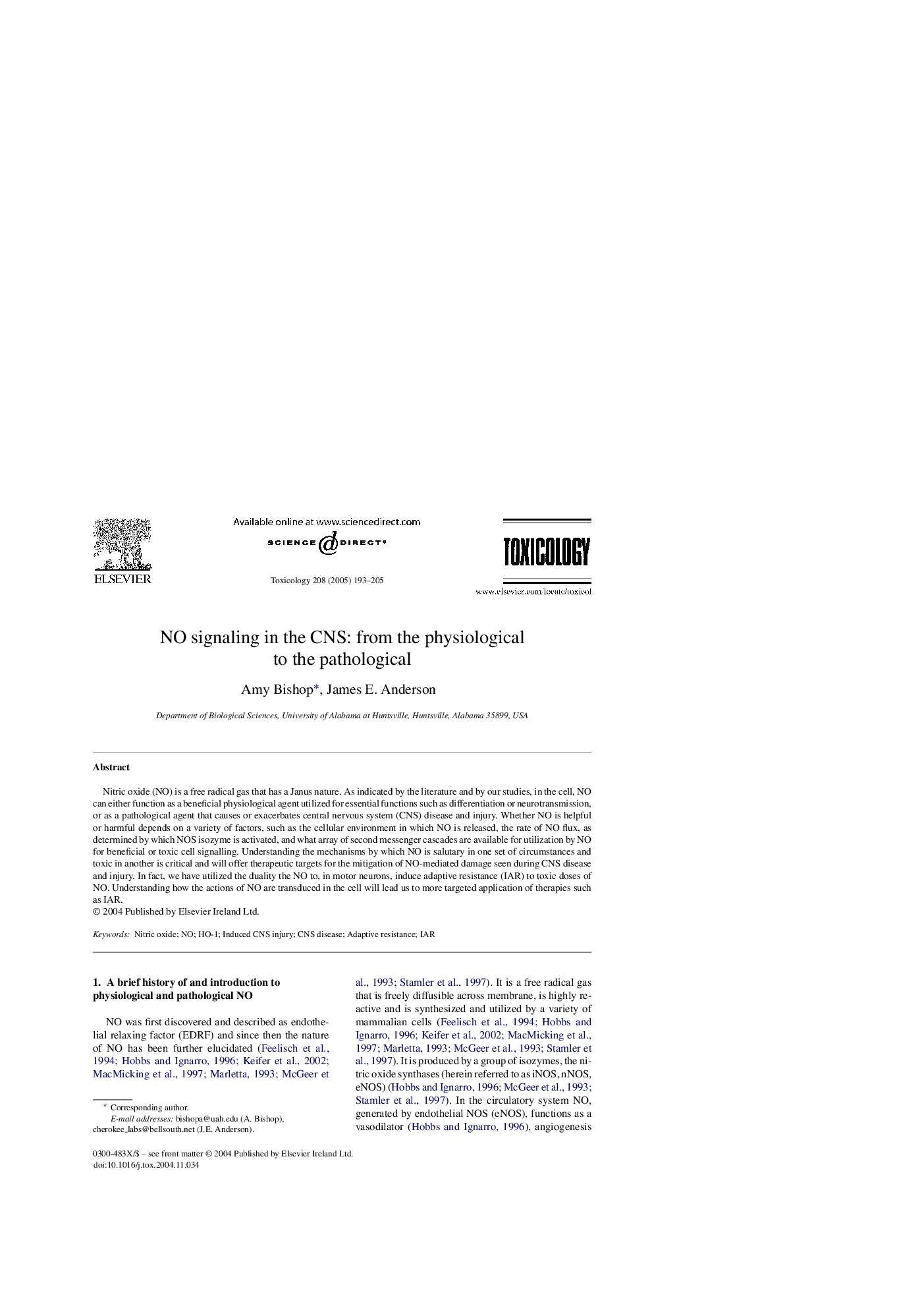| Article ID | Journal | Published Year | Pages | File Type |
|---|---|---|---|---|
| 9034707 | Toxicology | 2005 | 13 Pages |
Abstract
Nitric oxide (NO) is a free radical gas that has a Janus nature. As indicated by the literature and by our studies, in the cell, NO can either function as a beneficial physiological agent utilized for essential functions such as differentiation or neurotransmission, or as a pathological agent that causes or exacerbates central nervous system (CNS) disease and injury. Whether NO is helpful or harmful depends on a variety of factors, such as the cellular environment in which NO is released, the rate of NO flux, as determined by which NOS isozyme is activated, and what array of second messenger cascades are available for utilization by NO for beneficial or toxic cell signalling. Understanding the mechanisms by which NO is salutary in one set of circumstances and toxic in another is critical and will offer therapeutic targets for the mitigation of NO-mediated damage seen during CNS disease and injury. In fact, we have utilized the duality the NO to, in motor neurons, induce adaptive resistance (IAR) to toxic doses of NO. Understanding how the actions of NO are transduced in the cell will lead us to more targeted application of therapies such as IAR.
Related Topics
Life Sciences
Environmental Science
Health, Toxicology and Mutagenesis
Authors
Amy Bishop, James E. Anderson,
